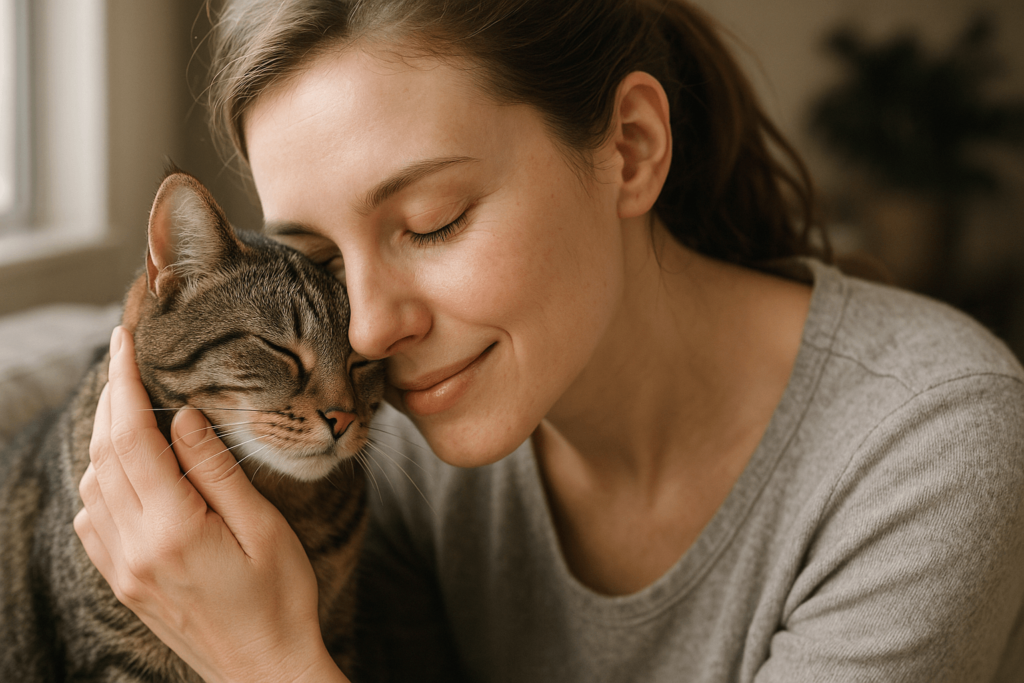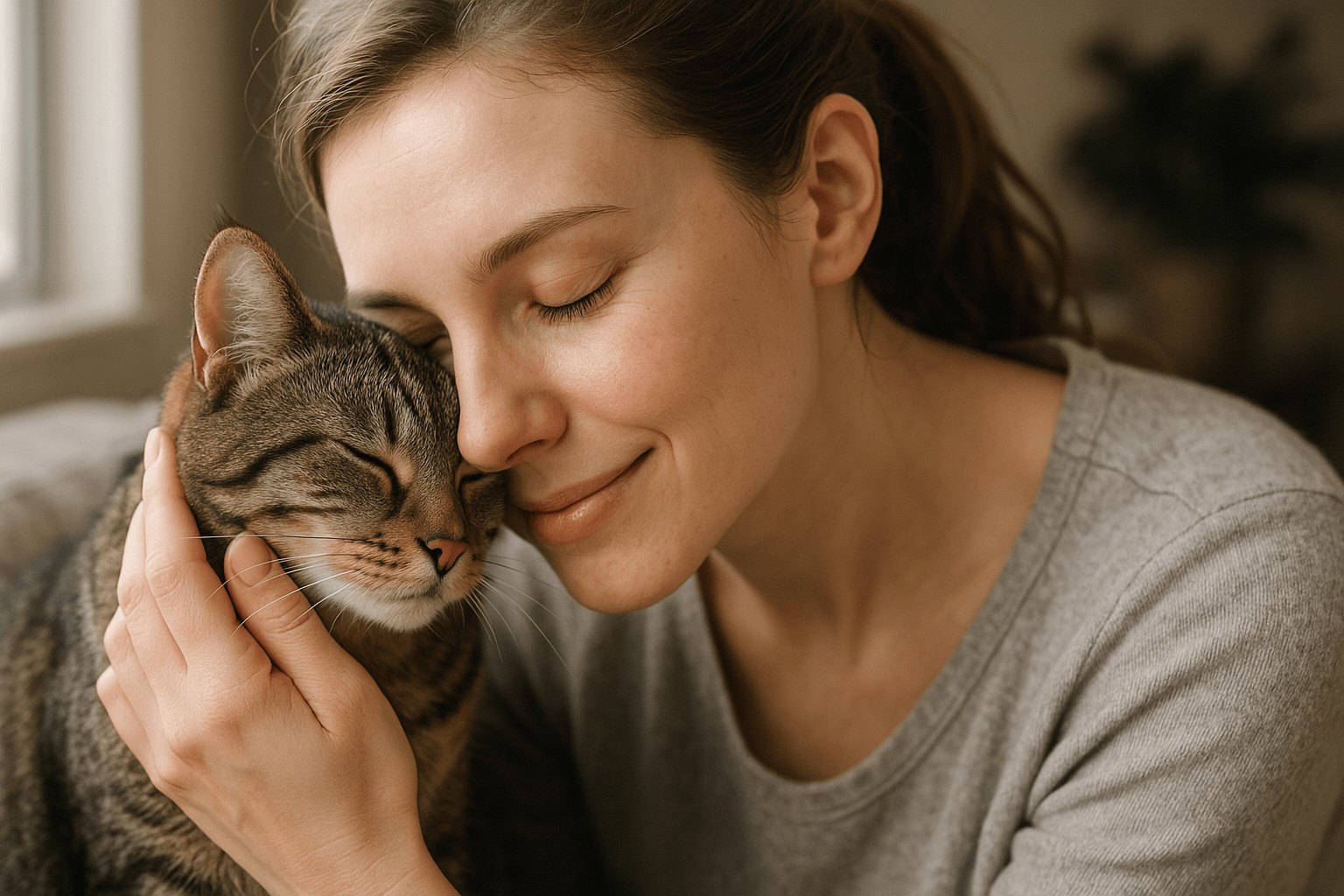How to Show Affection to a Cat
Cats are often seen as independent creatures, but that doesn’t mean they don’t crave love and connection. Unlike dogs, cats express and receive affection in more subtle ways, making it important to understand their unique language of love. Whether you’re a new cat owner or simply looking to strengthen your bond with your feline friend, learning how to show affection in a way they appreciate can deepen your relationship. From gentle gestures to understanding their body language, this guide will help you discover meaningful ways to connect with your cat and make them feel cherished every day.
Understanding Your Cat’s Love Language
Every cat has its own preferences when it comes to receiving affection. By observing their behavior and reactions, you can tailor your approach to suit their personality and comfort level.
Respect Their Space:
Cats value their independence. Giving them space when they need it shows respect for their boundaries and builds trust over time.Learn Their Favorite Spots:
Some cats enjoy being petted on the head or behind the ears, while others prefer chin scratches. Pay attention to where they lean into your touch.Observe Body Language:
A relaxed posture, slow blinks, or a gently swishing tail are signs your cat is comfortable and open to affection.Use Gentle Touches:
Avoid sudden movements or rough handling. Soft, deliberate strokes mimic how cats groom each other and are more likely to be appreciated.Be Patient with Shy Cats:
If your cat is timid, start by sitting quietly nearby and letting them approach you on their terms. Patience is key to building trust.
By tuning into your cat’s preferences, you can ensure your displays of affection are both meaningful and well-received.

Ways to Bond Through Play
Playtime isn’t just about exercise—it’s also an opportunity to show affection and strengthen your bond with your cat. Engaging in interactive activities helps build trust and creates joyful memories.
Use Wand Toys:
Feather wands or string toys encourage your cat to leap and pounce, mimicking their natural hunting instincts. Joining in the fun shows you care.Rotate Toys Regularly:
Keeping toys fresh and exciting prevents boredom and keeps your cat engaged during play sessions.Reward with Treats:
Pairing playtime with occasional treats reinforces positive associations and makes the experience even more enjoyable.Let Them “Win” Sometimes:
Allowing your cat to catch the toy occasionally boosts their confidence and makes playtime more satisfying.End Sessions Positively:
Always finish playtime on a high note, leaving your cat feeling happy and fulfilled rather than frustrated.
Through thoughtful play, you can create moments of connection that leave your cat feeling loved and valued.
Check this guide 👉What Is a Cat Love Bite? Best 7 Expert Tips!
Check this guide 👉My Cat Loves Belly Rubs: Best 7 Expert Tips!
Check this guide 👉Why Does My Cat Love Me So Much? Best 7 Expert Tips!
Signs Your Cat Feels Loved | Things That Might Stress Your Cat |
|---|---|
Purring loudly | Sudden loud noises |
Slow blinking at you | Being picked up without warning |
Kneading soft surfaces | Forced interactions |
Rubbing against your legs | Changes in routine or environment |
Following you around the house | Overstimulation during petting |
Showing Affection Through Grooming
Cats are meticulous groomers, and participating in this ritual can be a powerful way to show affection. Mimicking their grooming habits demonstrates care and strengthens your bond.
Gently Brush Their Fur:
Regular brushing removes loose hair and prevents matting, while also providing soothing tactile stimulation.Check for Mats or Tangles:
Addressing grooming issues promptly ensures your cat stays comfortable and avoids irritation.Use Cat-Safe Products:
Choose brushes and shampoos specifically designed for cats to avoid causing discomfort or harm.Incorporate Calming Techniques:
Speak softly or play relaxing music during grooming sessions to create a peaceful atmosphere.Reward Good Behavior:
Offer praise or treats after grooming to reinforce positive associations and keep the experience pleasant.
By incorporating grooming into your routine, you not only show affection but also contribute to your cat’s overall health and happiness.
Creating a Comfortable Environment
A loving home environment plays a crucial role in showing affection to your cat. Providing spaces and resources that cater to their needs demonstrates thoughtfulness and care.
Offer Cozy Hiding Spots:
Cats love having quiet places to retreat, such as enclosed beds or perches near windows.Provide Scratching Posts:
Scratching is a natural behavior that helps cats mark territory and maintain claw health. Offering posts satisfies this instinct.Maintain a Clean Litter Box:
A clean litter box shows respect for your cat’s hygiene and reduces stress caused by unpleasant conditions.Set Up Vertical Spaces:
Cats enjoy climbing and observing their surroundings from above. Install shelves or cat trees to fulfill this need.Keep Food and Water Fresh:
Ensuring access to clean, fresh water and high-quality food reflects your commitment to their well-being.
A nurturing environment communicates love and security, allowing your cat to thrive emotionally and physically.
Understanding Feline Communication
Cats communicate affection in subtle ways that often go unnoticed. Recognizing these signals allows you to respond appropriately and reinforce your bond.
Slow Blinking:
A slow blink is a cat’s way of saying “I trust you.” Return the gesture to show mutual affection.Tail Position:
An upright tail with a slight curve at the tip indicates happiness and openness to interaction.Purring:
While purring can signal contentment, it may also indicate comfort-seeking during stressful times.Head Rubbing:
Cats rub their heads against objects or people to mark them with their scent, signifying ownership and affection.Kneading:
This rhythmic motion stems from kittenhood and reflects feelings of safety and closeness.
By decoding these behaviors, you can better understand and reciprocate your cat’s expressions of love.
The Role of Scent in Feline Affection
Scent plays a vital role in how cats perceive and express affection. Incorporating scent-based interactions into your routine can enhance your bond.
Leave Clothing Nearby:
Placing a piece of clothing with your scent near their bed provides comfort and reassurance.Avoid Strong Fragrances:
Harsh perfumes or cleaning products can overwhelm a cat’s sensitive nose, causing stress. Opt for unscented options instead.Use Synthetic Pheromones:
Products like Feliway mimic calming pheromones, helping anxious cats feel more secure.Respect Marking Behaviors:
Cats may rub or scratch objects to claim territory. Redirect this behavior to appropriate items like scratching posts.Share Scents During Introductions:
When introducing a new person or pet, swap scents beforehand to ease tension and foster familiarity.
Leveraging scent-based strategies strengthens trust and deepens emotional connections with your cat.
Building Trust After Trauma
If your cat has experienced trauma, earning their trust requires extra care and sensitivity. These steps can help rebuild their confidence and foster affection.
Give Them Time:
Allow traumatized cats to acclimate at their own pace without pressuring them to interact.Create Safe Zones:
Designate areas where they feel secure, such as a quiet room with familiar items like blankets or toys.Stick to a Routine:
Consistent feeding, play, and grooming schedules provide stability and reduce anxiety.Use Positive Reinforcement:
Reward small victories, like approaching you or accepting treats, with praise and encouragement.Consult a Veterinarian:
If your cat exhibits persistent fear or aggression, seek professional guidance to rule out medical or behavioral issues.
With patience and compassion, even the most fearful cats can learn to trust and eventually return your affection.
Frequently Asked Questions About Showing Affection to Cats
Why does my cat headbutt me?
Headbutting, or bunting, is a sign of affection and trust. Cats use scent glands on their heads to mark you as part of their family.
How do I know if my cat likes being petted?
Signs of enjoyment include purring, leaning into your hand, or kneading with their paws. If they move away or flick their tail, stop petting.
Should I pick up my cat to show love?
Not all cats enjoy being picked up. Respect their preference by observing their reaction before lifting them.
What does it mean when my cat licks me?
Licking is a form of grooming and bonding, similar to how cats groom each other in social groups.
How can I bond with a shy cat?
Spend quiet time near them, offer treats, and let them initiate contact. Building trust takes time but is worth the effort.
Strengthening Your Bond Through Thoughtful Affection
Showing affection to a cat requires patience, observation, and a willingness to adapt to their unique personality. By respecting their boundaries, engaging in play, and creating a nurturing environment, you can build a deep and lasting connection. Remember, every cat expresses love differently, and understanding their cues is key to forming a harmonious relationship. With time and care, your efforts will not only make your cat feel cherished but also enrich your life with their companionship and charm.
Canned Pumpkin for Cat Diarrhea: Best 7 Expert Tips! Natural remedy to firm stools, soothe upset bellies, and support gut health safely.
Can a Cat Give You Scabies? Best 7 Expert Tips! Discover the truth about feline mites, human skin risks, and how to protect yourself—without panic.
Cat Flea vs Human Flea: Best 7 Expert Tips! Discover the truth about bites, species, and how to eliminate infestations for good.
Weird Cat Behaviors: Best 7 Expert Tips! Discover why cats do strange things—and how to understand, not punish, their instincts for a happier home.





